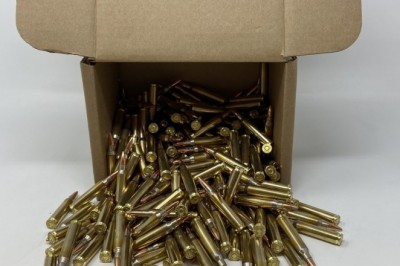views

Virtually everyone who runs appreciates the need for a good pair of running shorts. Running shorts are often described as being just another tiny base layer in their running kit, which explains why they should be efficient, comfortable, and age-appropriate. As we talk about what to look for in a pair of running shorts, you'll learn how to discern the best option for your needs.
What are Trendy Running Shorts?
- When it comes to running shorts, there are a few different styles that are trendy right now.
- The first style is the traditional running short, which is usually made of lightweight material and falls just above the knee. These shorts are great for any type of runner, whether you’re a beginner or a seasoned pro.
- Another popular style is the “skort,” which is a skirt with built-in shorts underneath. This style is perfect for those who want a little extra coverage or prefer not to show too much skin while they run.
- Lastly, there are compression shorts, which are tight-fitting shorts that are typically made of a spandex-like material. These shorts are said to help improve circulation and muscle recovery, making them ideal for long-distance runners or anyone recovering from an injury.
- No matter what style you choose, make sure you pick a pair of running shorts that fit well and are comfortable to run in. After all, there’s nothing worse than having to stop your run because your clothes aren’t cooperating!
Tips for Choosing the Best Running Shorts
If you're new to running or just looking to add to your wardrobe, you may be wondering what the best running shorts are. There are a few things to consider when choosing running shorts, such as length, fabric, and fit.
Length: Running shorts come in different lengths, from 3-inch inseams to 9-inch inseams. The shorter the inseam, the less fabric there is to bunch up or rub against your skin. However, some people prefer a longer inseam for more coverage.
Fabric: Most running shorts are made from polyester or nylon. These fabrics are lightweight and breathable, which is important for keeping you cool and comfortable while you run. Some shorts also have spandex or Lycra blended into the fabric for a little extra stretch.
Fit: It's important that your running shorts fit well. They should be snug but not too tight, and they should stay in place while you run. Avoid anything that's too loose or baggy, as it can cause chafing or ride up during your run.
Types of Running Shorts
There are different types of running shorts to choose from depending on your preference. The most popular type is the compression short, which is designed to hug your muscles and help improve blood flow. They’re also great for recovery after a run. Another popular option is the split shorts, which have a seam that runs down the center of the thigh to allow for more range of motion. If you prefer a less constrictive feel, loose-fitting or mesh running shorts are also options. Lastly, there are skorts, which are shorts with a skirt attached. They’re ideal if you want extra coverage or support in the back and don’t mind sacrificing some range of motion.
What To Wear With Your Running Shorts
Assuming you've already got the perfect pair of running shorts, you might be wondering what to wear with them. Do you need a special top? Sports bra? Socks?
The good news is that you can probably get away with wearing whatever you have in your closet already. If you're going for a long run, you'll want to dress in layers so you can take off or add on clothing as needed. A tank top or t-shirt paired with a light jacket should suffice. For a shorter run, you can probably get away with just a sports bra and tank top.
As for shoes, again, you can probably get away with whatever you have. If you're going to be running on pavement, however, it's best to wear shoes that have some cushioning to protect your joints. And if you're going to be running in the dark or early morning hours, make sure to wear reflective gear so drivers can see you.
Finally, don't forget socks! They may not seem like an important part of your outfit, but they actually play a crucial role in keeping your feet comfortable and dry. Look for socks that are made specifically for runners and designed to wick away sweat.
Where to Pair Your Favorite Runners
If you're like most runners, you have a few favorite pairs of shorts that you love to run in. But what if your favorite shorts don't match the shoes you're running in? Or what if you want to change up your look and try something new?
Here are some tips on how to choose the right shorts to pair with your favorite running shoes:
- Consider the colors of your shoes and shorts. You don't necessarily have to match them perfectly, but complementary colors will look great together.
- Think about the style of your shoes and shorts. If you're wearing a more casual pair of running shoes, go for a simpler pair of shorts. However, if you're going for a more athletic look, consider pairing your favorite runners with a pair of compression shorts or even a shorter pair of running shorts.
- Make sure you're comfortable! Ultimately, the most important thing is that you're comfortable in your clothes so that you can focus on your run. So make sure to try on different combinations of clothes until you find something that works for you.
Top 10 Signs That You Need New Runners
There are a few telltale signs that you need to invest in new running shoes. Here are the top 10:
1. Your shoes are more than six months old.
2. The soles of your shoes are worn down.
3. You’ve developed blisters or calluses on your feet.
4. Your toenails are black and/or brittle.
5. Your feet hurt after running, even with proper form and shoe support.
6. You have Plantar Fasciitis or another foot injury.
7. You start to see wear patterns on the outsides or bottoms of your shoes.
8. Your shoes feel uncomfortable or “off” when you run in them.
9. You can’t find your shoes’ sweet spot anymore (i.e., the pressure points on your feet no longer line up with the support in your shoes).
10, You’re simply not running as well as you used to and can’t figure out why
If any of these sound familiar, it might be time for an upgrade!
Conclusion
We hope that our guide on running shorts has been helpful in narrowing down your options and helping you find the best pair of running shorts for you. Remember to take into account the different factors we mentioned when making your purchase, such as fabric, fit, and price. With a little bit of research, you should be able to find the perfect pair of running shorts that will help you reach your fitness goals.












